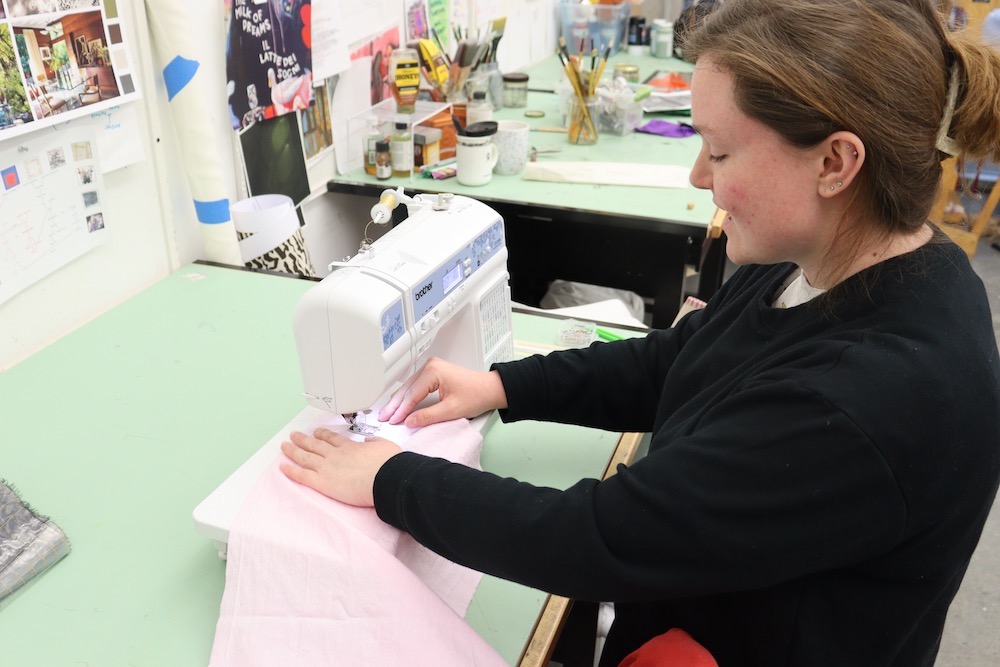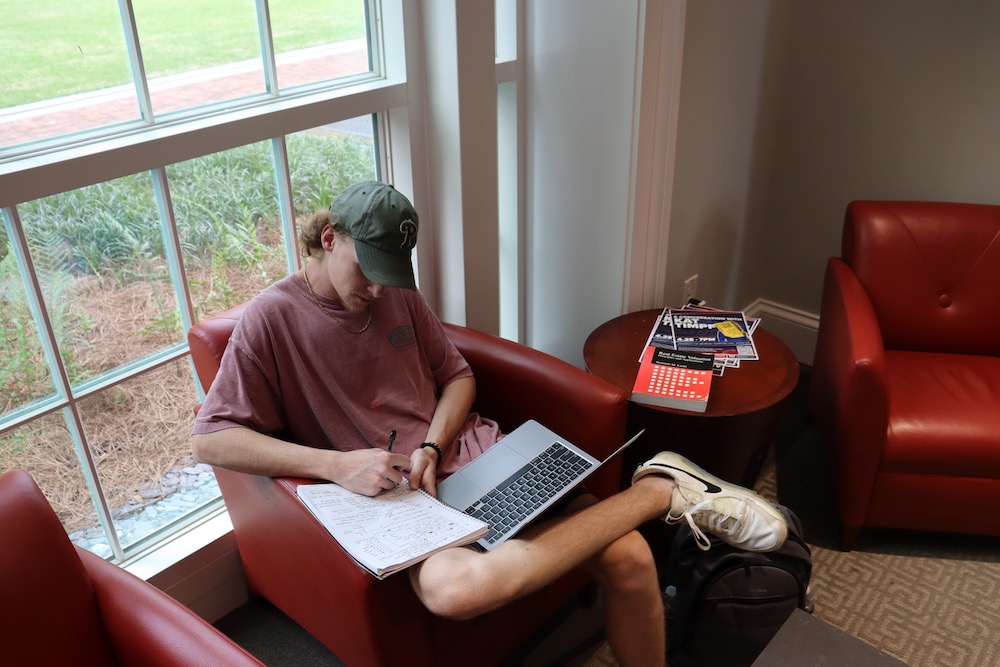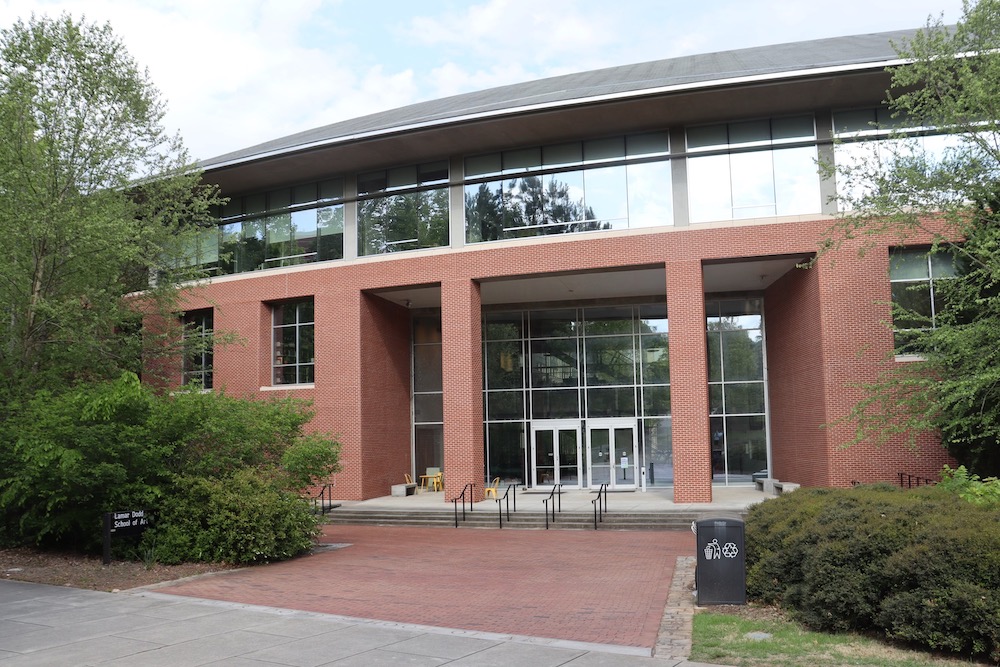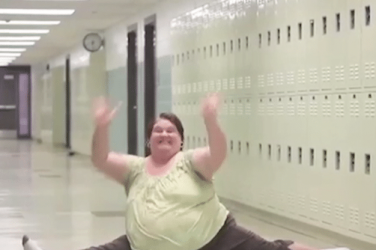College students, especially those from low-income families, face a wide range of financial obstacles on campus. For those majoring in art, one of the biggest obstacles might the cost of supplies and other materials necessary for class assignments.
Why It’s Newsworthy: Prospective art students face large out-of-pocket costs for art supplies. They typically pay more for class supplies than students majoring in other subjects at the University of Georgia.Depending on a student’s school and major, there is a vast inconsistency in the amount UGA students are spending on additional educational expenses beyond tuition. When compared with students majoring in business and political science, for example, art students face much higher supply costs.
“What we make here will determine our job; we get a job based on what we are creating here and outside class and that is displayed through a portfolio,” says Aubrey Williams, a graphic design and textile student at the Lamar Dodd School of Art.

The resources and supplies Williams and her fellow art students need to produce a competitive portfolio are expensive.
According to Williams, the art professors at UGA place an emphasis on hands-on processes rather than the product to prepare students for the ever-changing art industries. Design aesthetics and art movements come and go, but the creative process endures.
“We learn so many skills and ways to apply those skills in school,” says Williams.
Students require a vast amount of supplies and material to prepare to artwork and creative designs for their studio courses, which form the backbone of their portfolios.
Typically, art students spend $200 on sewing machines, $240 on the Adobe Creative Cloud software for digital design and $450 for foundation class kits and cameras. In addition, students make frequent trips to stores such as Hobby Lobby and Walmart to replenish their stock of fabric, paints, papers, charcoal and other materials.
Grace Sizemore, a textile design senior, says she’s spent hundreds of dollars on her capstone course alone this semester.
“The most I have spent has been on my capstone…which is coming close to $1000,” says Sizemore.
Wide Disparity in Costs
On the other hand, senior real estate major Jack Gilmartin in the Terry College of Business is spending considerably less on expenses this semester.

“I would say I spend about $240 a semester, on average,” says Gilmartin.
All Gilmartin needs most semesters is his laptop, notebooks, textbooks and e-books.
Jacob Mitchell, a senior political science major, is also spending less than art students this semester.
“On average I spend $200 a semester,” says Mitchell, “besides my senior year which I’ve spent even less.”
Mitchell believes lower supply costs have helped him keep his student debt low and allowed him to enjoy his college experience.
Students in the Grady College of Journalism and Mass Communication also experience a wide range of expenses in a typical semester.
“I spend about $250 a semester; it’s never really been that bad,” says Will Daughtry, a third-year journalism student.
Most of Daughtry’s expenditures are on software he needs for his courses.

Professors Help Out
Some professors like Jeffery Duncan, a journalism professor and fourth-year Ph.D. student, try to help students keep expenses down. He loans out his own materials, makes copies available and makes alternative educational resources available.
“The ones that do have budgetary issues, I will always make available to them and copy the most important things for them,” says Duncan.
UGA does support a no cost and low-cost course policy. Gretchen Thomas, a senior lecturer in the learning design and technology program, fully endorses this policy.
“I try to keep all of our classes … low cost or no cost. To be no cost it has to be $40 or less,” says Thomas.
Knowing that art students invest much of their own money into the art programs, Thomas believes the students need to be made aware of the costs before they enroll.
While some courses and professors at UGA are working to keep student expenses low, art students use consumable nonrenewable supplies. They frequently need to restock their supplies such as paint, brushes, papers and fabric.
Lamar Dodd Offers Assistance
Many art students use their creativity outside the studio to help cut costs, looking for bargains and stretching their dollars as far as they can.
“I would go to the thrift store and buy old bed sheets if they were 100% cotton and use those as my yardage fabric,” says Sizemore.
Sizemore can purchase fabric for $3 at a thrift store when it would cost $15 to $30 at a major fabric retailer such as Joann Fabric and Crafts.
Lamar Dodd School does offer some financial support in the form of scholarships and grants. These include micro grants of up to $250 per student per semester. The college also provides weaving looms and a wall of yarn for weaving, which can help offset expenses. The college also has a screen-printing lab complete with printing screens and emulsions. But even with these aids, students are still spending hundreds of dollars to complete projects and build dynamic portfolios. They hope the effort makes them more competitive in the job market after graduation.
When asked whether all of these expenses are worth it, Sizemore says, “It’s worth it because we’re here to learn and that’s what the materials are helping us do.”
Rylie O’Brien is a third-year student majoring in journalism.








Show Comments (0)